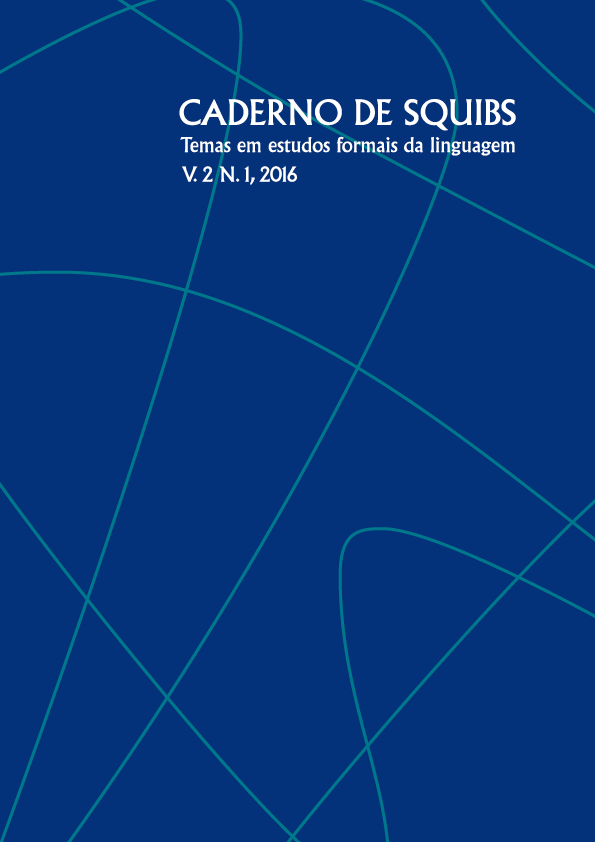The definite article and its positions in the structure of the DP: evidence from Irish English and Alemannic
Keywords:
DP structure, weak definites, genericity, spoken (non-standardized) varieties of English and GermanAbstract
In this squib, the comparison of standard and non-standard varieties of German and English provides evidence for a fine-grained DP-structure regarding the position of the definite article. Besides different positions reflecting the well known distinction between generic and deictic readings, I will argue that only deictic determiners are located in D, whereas so called weak definites occupy a lower position. This lower position, labelled artP, is argued to be the highest functional projection in nominal expressions, which are non-deictic. The suggested structure is an elaboration of the structure developed by Borer (2005).
Downloads
References
BORER, H. In name only. New York: Oxford University Press, 2005.
BORIK, O. & ESPINAL, T. M. Reference to kinds and to other generic expressions in Spanish: definiteness and number. The Linguistic Review, v. 32, n. 2, 2015.
CARLSON, G.; SUSSMANN, R.; KLEIN, N.; TANENHAU, M. Weak definite noun phrases. Proceedings NELS, 2006.
EPSTEIN, R. The definite article, accessibility, and the construction of discourse referents. Cognitive Linguistics, v. 12, n. 4, 2001.
FILPPULA, M. Changing paradigms in the study of Hiberno-English. Irish University Review, v. 23, n. 2, 1993.
FILPPULA, M. The Grammar of Irish English. Language in Hibernian Style. London and New York: Routledge, 1999.
HAWKINS, J. A. Definiteness and indefiniteness: a study in reference and grammaticality prediction. London: Croom Helm, 1978.
HICKEY, R. Irish English: History and present-day forms. New York: Cambridge University Press, 2007.
LONGOBARDI, G. Reference and proper names: a theory of N-movement in syntax and logical form. Linguistic inquiry, v. 25, n. 4, 1994.
POESIO, M. Weak definites. Proceedings of the Fourth Conference on Semantics and Linguistic Theory, SALT 4, 1994.
QUIRK, R.; GREENBAUM, S.; LEECH, G.; SVARTVIC, J. A Comprehensive Grammar of the English Language. New York: Longman, 1985.
ROEHRS, D. The Morpho-Syntax Of The Germanic Noun Phrase: Determiners Move Into The Determiner Phrase. Doctoral dissertation, Indiana University, 2006.
SABBAN, A.Gaelisch Englischer Sprachkontakt. Zur Variabilitat im g ¨ alischsprachigen Gebiet Schott- lands. Heidelberg: Sammlung Groos, 1982.
SCHWARZ, F. Two types of definites in natural language. Open Access Dissertations, 2009.
WILTSCHKO, M. What’s in a determiner and how did it get there? In: GHOMESCHI, J.; PAUL, I.; WILTSCHKO, M. (Eds.). Determiners: Universals and Variation. Amsterdam, Philadelpha: John Benjamins, 2009.
Downloads
Published
Issue
Section
License
Autorizo a publicação de squib/artigo de minha autoria e inteira responsabilidade para publicação.
I authorize the publication of the squib/paper of my authorship and full responsibility for publication.


